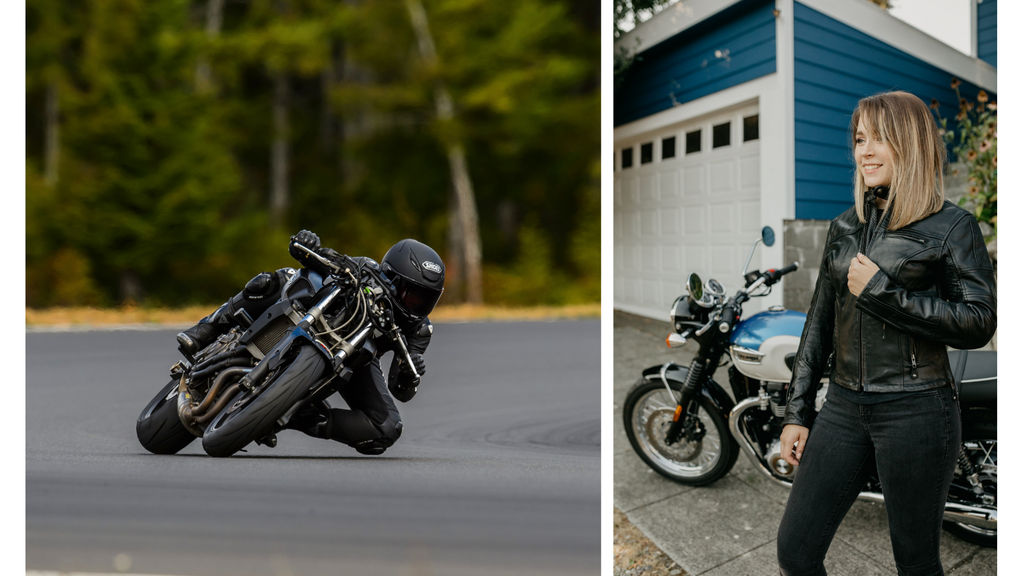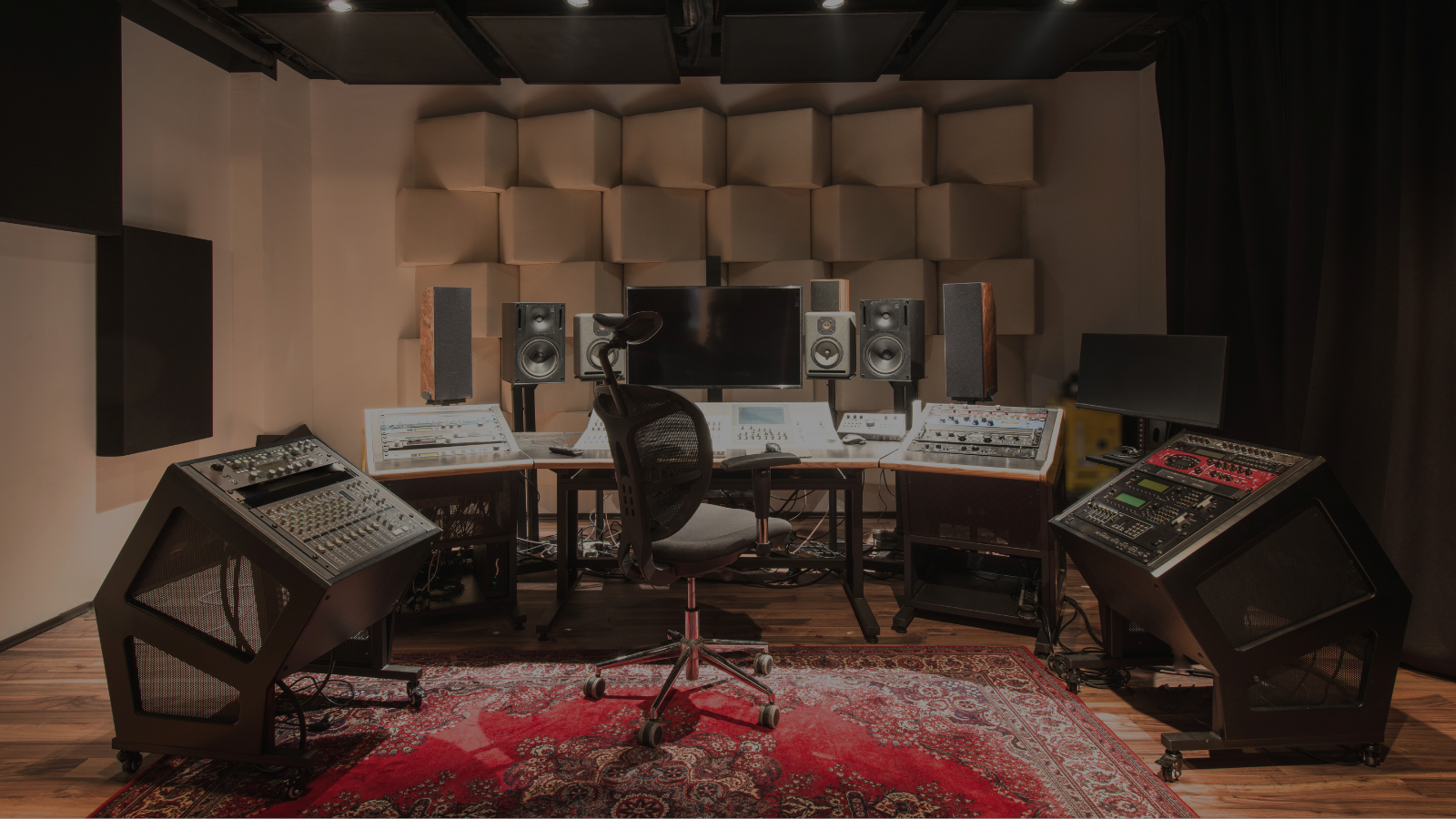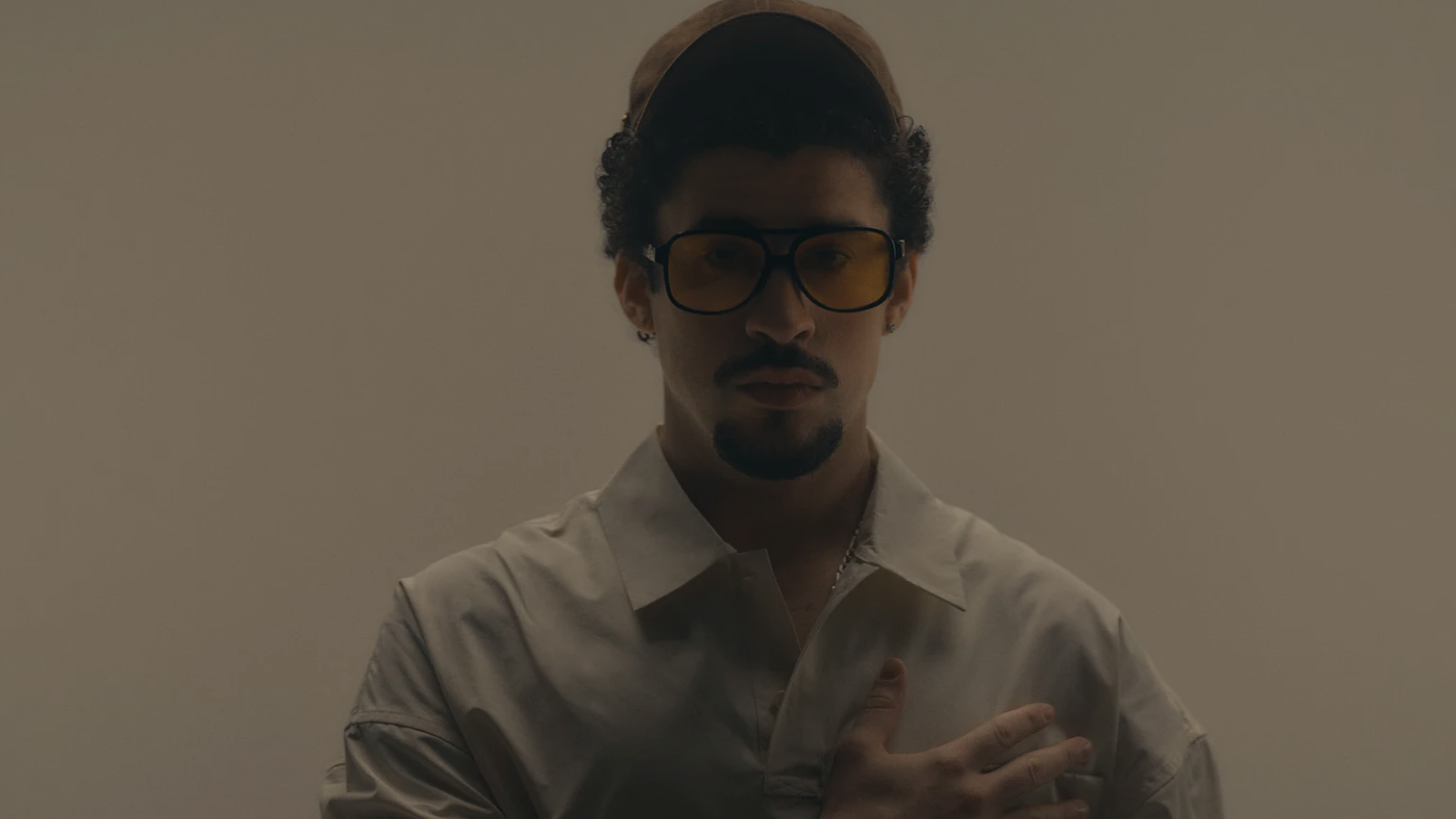by Hailey Arnold
The dangers of hearing loss on two wheels.
Anyone who rides a motorcycle has at some point been warned (probably several times) about how dangerous murdercycles are. I have fond memories of a spontaneous intervention during Christmas dinner with my extended family, who all tried to convince me to quit because riding is too dangerous for a girl like me. Most of us laugh it off with edgy remarks like “I eat danger for breakfast!” or “maybe I want to die!” Wait, is that just me? Please tell me I’m not the only one that puts on a hardcore persona of fearless badassery in response to genuine concern for my safety… But the truth is, I am secretly concerned about my safety. That’s why I wear a full-face helmet and CE-rated riding gear. I like to think that I can improve my chances by wearing armored protection and sharpening my riding skills with coaching and practice. And As responsible as I like to think I’ve been since I started riding, I have neglected to protect myself from a very real, though often ignored, danger: hearing loss.
Here are the facts:
- “When we are exposed to harmful noise—sounds that are too loud or loud sounds that last a long time—sensitive structures in our inner ear can be damaged, causing noise-induced hearing loss (NIHL). These sensitive structures, called hair cells, are small sensory cells that convert sound energy into electrical signals that travel to the brain. Once damaged, our hair cells cannot grow back. In other words, if you overuse it, you lose it.”
- “The risk of hearing damage can be measured in two ways - how loud and how long. Just one loud BOOM above 120 dB can cause immediate harm to your ears, and continuous exposure to noise at 85 dB can be harmful over time. One way to find out? If your experience leaves your ears ringing or dulls your hearing sense, you’ve been listening to something that's too loud or for too long without proper hearing protection.”
- “An increase of only a few decibels has a dramatic effect on the danger to hearing. Each increase of 3 Decibels (dB) represents a doubling of noise energy/sound pressure, and halves the safe exposure time you should listen for.”
Which factors contribute the most to noise levels while riding?
There are several sources of noise that may damage a motorcyclist’s hearing.
1. Wind noise at various speeds of travel
*Wind noise can also be affected by factors such as the aerodynamics of the bike (fairings, windscreen), riding position, and the aerodynamics of the rider’s helmet.
2. Motorcycle’s exhaust or engine noise
3. Ambient road noise and traffic

Several studies over the last four decades have found that even something as unavoidable as wind noise at typical speeds on a motorcycle well exceed safe volumes. Researchers at Henry Ford reported that at 15mph, wind noise measured at as much as 85 dB, and at 60mph, wind noise reached 120 dB. Other studies have found consistent results, reporting noise levels between 90 dB at 30mph, and 115 dB at 70mph, without accounting for natural crosswinds or poor aerodynamics that may increase volumes further. According to OSHA, exposure to noise at this volume should be limited to 15 minutes per day. Yeah, right! My commute to work alone would exceed those safety recommendations.
Wind noise may be amplified or reduced by the use of a windscreen and aerodynamic motorcycle bodywork. Those riding naked bikes without a windscreen will experience the loudest wind blast, and those with touring bikes with tall windscreens will be shielded a bit from both wind force and noise.
Do loud pipes save lives?
We’re all familiar with the saying “loud pipes save lives.” The idea is that loud motorcycle exhausts draw attention from distracted drivers on the road, making motorcyclists more noticeable and therefore, safer. Despite being an appealing justification for installing the most obnoxious aftermarket exhaust system available on your sweet ride, the myth has been famously debunked by researchers and high school science teachers alike. Thanks to a combination of the Doppler Effect and sound-proofing insulation in modern cars, it turns out that loud pipes cannot be heard from inside cars during normal driving conditions. A recent Romanian study on the subject tested the volume of six different motorcycles, with exhaust noise ranging from 80-110 dB, from inside a car at various distances and angles. Autoweek summarized the study’s findings, stating that “at 50 feet behind the car, none of the motorcycles in the test [could] be heard inside the car” and “at 33 feet behind the car, even the noisiest motorcycles tested [could] hardly be heard inside the car.” Surprisingly, even at closer distances, directly parallel to the car and 13ft in front of the car, almost none of the motorcycles could be clearly heard. At such a close range, researchers point out, the motorcyclist probably wouldn’t have much time to react to sudden movements by other vehicles on the road. We can safely conclude that the study disproves the age old myth that loud pipes save lives. We should also take note of the intense volume of the motorcycles involved in the study, the loudest of which measured at a whopping 110 dB. While motorcyclists may mistakenly think that their loud pipes are keeping them safe, they are more likely causing irreparable damage to their ears.
Do helmets solve for hearing loss?
The quietest helmets on the market may help insulate your ears from road noise, but only to a certain extent under specific conditions. These conditions are explained in fantastic detail in an article published by AGV Sport. In brief summary, a full-face helmet needs to fit snugly around your jaw and neck, limiting the airflow through the bottom of the helmet. More aerodynamic shell and air vent designs allow air to flow without turbulence, therefore less wind noise is generated. Unsurprisingly, open face helmets don’t protect your ears from hearing loss.

The German helmet brand, Schuberth, boasts that they make the quietest helmets on the market. They are one of the only helmet brands that tests noise levels in a wind tunnel, to ensure that volumes do not exceed 82-85 dB inside their top-of-the-line helmet models, the C3 Pro and C4 Pro. Schuberth’s hearing protection comes at a cost (around $650-$900 to be specific) and these models are modular helmets, which are notably less protective in the event of a crash than a standard full-face helmet. Still, we have to commend Schuberth’s commitment to addressing the issue of hearing protection while so many other companies fall short in this respect.
Shoei has also attempted to address the issue of noise reduction in their newest model of full-face helmet, the RF-1400. Compared to the previous iterations in the popular RF line, the RF-1400 sports some new features that are specifically aimed at reducing noise. Shoei has redesigned the checkpads and neckroll to form a tighter fit around the rider’s chin and neck, allowing significantly less wind to blow inside the helmet. The new shield design has little spines called “vortex generators” along the edge, which reduce wind turbulence. And, the shield’s beading provides a more airtight seal. Shoei does not provide data on the noise levels from within their helmets, but in my personal experience, the RF-1400 is the quietest helmet I have ever worn.
All that effusive praise aside, helmets alone cannot always provide adequate hearing protection. I’ve worn properly fitted, top-rated helmets since day one. If helmets alone could protect your hearing, I wouldn’t be writing this article right now. And before you accuse me of being a harbinger of doom and gloom, all I’m saying is that you should double-up on your hearing protection!
My personal experience with hearing loss…
I was not always so concerned about hearing loss. In fact, it was only recently that I started wearing earplugs on my bike. I had to learn about the dangers of hearing loss the hard way. [Now, imagine me mournfully gazing at the sea with a cardigan wrapped around my shoulders, for the full dramatic effect of my cautionary tale…]
The moment I heard the full-system Akrapovic exhaust on my Yamaha FZ-07 years ago, I fell in love. It’s rumbly, it’s throaty, and it is loud as hell. Every chance I’d get, I’d be that biker, revving their engine in tunnels and blipping the throttle to downshift just to hear the backfire crackle. Those familiar with the bike model know, it’s a naked sportbike with no windscreen or fairings to protect the rider from wind. I’d spend my weekends riding twisties, speeding down the highway, and revv-bombing my friends. You can see where this is going, right? As much as I hate to admit it, I think my love affair with that bike’s sound marked the beginning of the slow but sure downfall of my hearing health, even within a few short years.

Before I started riding motorcycles, I had ah-mazing ears. Everything sounded so crisp and clear, I literally never considered that my hearing would be anything less than perfect. You know when you’re young and you feel invincible? Well, I’m still young, but my reckless attitude toward my hearing health has already put my hubris in its place.
In hindsight, the signs of hearing loss were clear. Post ride, I’d often feel like I needed to “pop my ears” because everything sounded dull and muffled. Sometimes, I would get a headache just from the wind noise of highway riding. After a longer ride, my ears would ring for hours. I always wrote it off because my hearing would eventually “go back to normal,” but now I’ve realized that mediocre is my new normal, and I’ll never get that super-hearing back. The truth is, you probably won’t notice hearing loss until it’s gotten pretty severe. Hearing loss happens over time, like water evaporating from a glass on your bedside table.
My dad’s experience with hearing loss serves as a good reminder to me that hearing damage should be taken more seriously. Ever since he was in his teens, he’s had two passions; motorcycles and music. Dad’s been riding his whole life, so he’s got decades of incremental hearing damage on me. He recently caved in and got hearing aids, and was shocked and dismayed to realize that his hearing really had gotten bad. For the last few years he’s also suffered from tinnitus, which causes him to hear a constant ringing in his ears. My dad’s the kind of guy that never admits that he’s suffering, but I know his hearing loss and tinnitus must have a negative impact on his ability to enjoy his passion for music and Hi-Fi audio systems. I take after my dad in a lot of ways, sharing a passion for motorcycles, music, movies, and good conversation. So I’ll choose to learn from his experience and protect my hearing while I still can.
Neither my dad nor I would ever consider quitting riding for our hearing health. That is out of the question. I’m stubborn and I love it too much. Nor has that obnoxious biker inside me died just because I’ve been scared into caring about hearing loss. Now I simply protect my ears the same way I protect the rest of me; with gear! Specifically, noise-filtering ear plugs.
In case hearing loss isn’t a good enough reason to wear earplugs…
The biggest argument against wearing hearing protection is that riders need to be able to hear their surroundings. Although this is true, too much noise can also be dangerously distracting for motorcyclists. A study on the impact of background noise on brain function suggests that exposure to background noise can slow reaction times and consume mental resources. According to the study, “background noise of 60dB modulates cortical information processing of visual-spatial attention” (Trimmel et al). This means that average wind and engine noise on a bike can tax your brain and make it harder to process and react to your surroundings. It goes without saying, reaction times are pretty critical on a motorcycle.
Protect your peace, with EarPeace ear plugs.
Motorcyclists need the best of both worlds; hearing protection that saves our ears without completely blocking out the sounds around us. We need to be able to hear emergency sirens and approaching vehicles for our safety and the safety of others. Awareness of our surroundings is everything on a bike. We also want to enjoy the experience of riding to its fullest extent, including the sounds of our motorcycles. That’s where ear plugs that filter out dangerous decibels without silencing the sounds you want to hear at a safe volume, really save the day. Moto Pro ear plugs offer the best of both worlds, and give me the peace of mind I need to live my best moto life without concern for my hearing health down the road. Noise-filtering ear plugs seem like such a simple solution, and maybe that’s because they are. Ear plugs are just another piece of my riding kit these days, and I’m looking forward to enjoying many years of riding without sacrificing my hearing.

Hailey lives in Seattle with her wonderful partner and her funny little dog. She has spent the last few years working at motorcycle dealerships and takes great joy in acting as a source of information and encouragement to new riders. Hailey loves exploring the incredible Pacific Northwest scenery on her Ducati Streetfighter, soaking up quality time with friends, and savoring little moments of happiness in everyday life. You can follow her on Instagram: @coldheartedsnek





Share:
The Road to Leh
Affected: The Chemistry & Emotions of Live Music